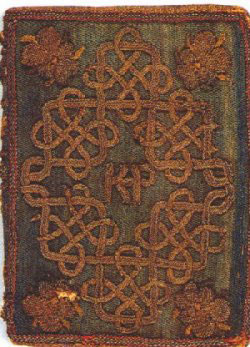According to Agnes Strictland, in The Lives of the Queens of England, the following is a list of Mary Seymour’s nursery effects:
“First, 2 pots of silver, all white. Item, 3 goblets, silver, all white. One salt, silver, parcel-gilt. A maser (woooden cup) with a band of silver, parcel-gilt. 11 spoons, silver, all white. Item, a quilt for the cradle, 3 pillows, and 1 pair of fustians. 3 feather beds, 3 quilts, 3 pair fustians. Item, a tester of scarlet, embroidered with a counterpoint (counterpane) of silk serge belonging to the same, and curtains of crimson taffeta. Item, 2 counterpoints of imagery for the nurse’s bed. Item, 6 pair of sheets of little worth. 6 fair pieces of hangings within the inner chamber. 4 carpets for windows. 10 pieces of hangings of twelve months (tapestries with the rural occupations of the twelve months) within the outer chamber. Item, 2 cushions cloth-of-gold, and a chair of cloth-of-gold, 2 wrought stools and a bedstead gilt, with a tester and counterpoint, with curtains belonging to the same.”
And also,
“2 milch beasts, which were belonging to the nursery, the which it may please your grace (Somerset) to wite (know) may be bestowed upon the two maids towards their marriages, which shall be shortly. Item, one lute.”

I tried to incorporate a few of these items – not too many – as Grace would not have been able to take too many things with her. I felt it was important to use the crimsom pieces as crimson was Katherine Parr’s favorite color. And of course, the two milch beasts make their appearance in Grace’s journal, and lastly, the lute, which seemed so intriguing to me. Who could have given it to Mary? Was it a gift from her father? Her mother? It’s a touching and hopeful gift for a babe, a gift that implies the child will grow old enough to play it – not a given in Elizabethan times when child mortality rates were so high. Alas, there were such high hopes for the baby Mary.